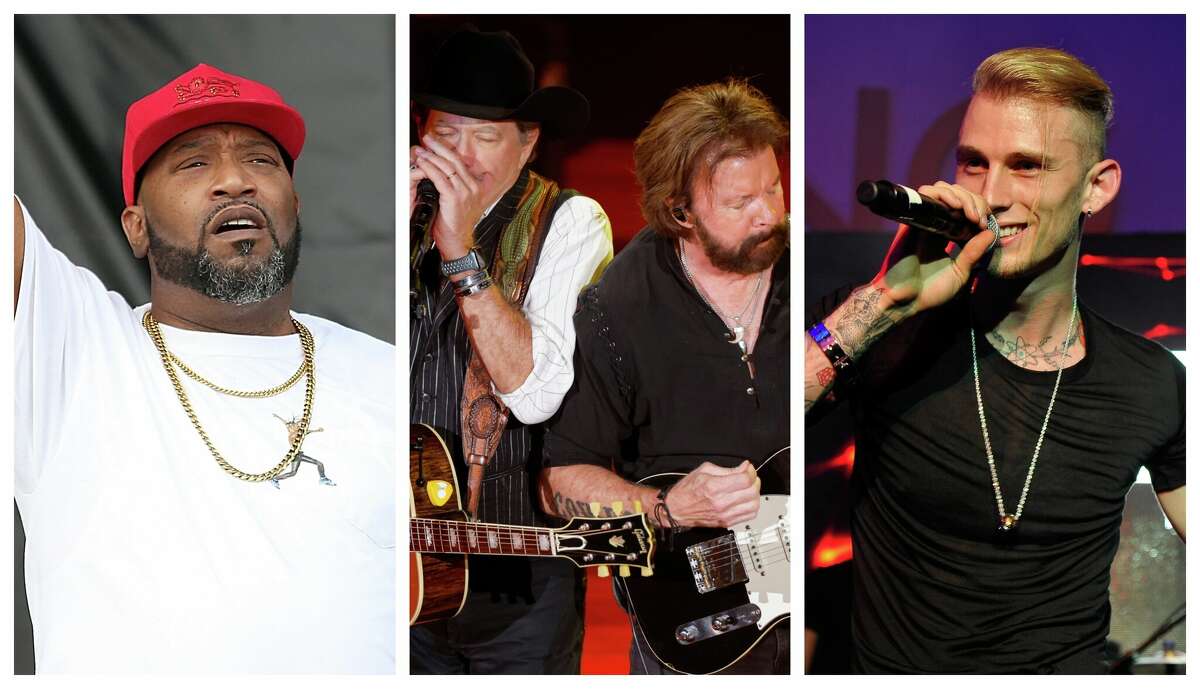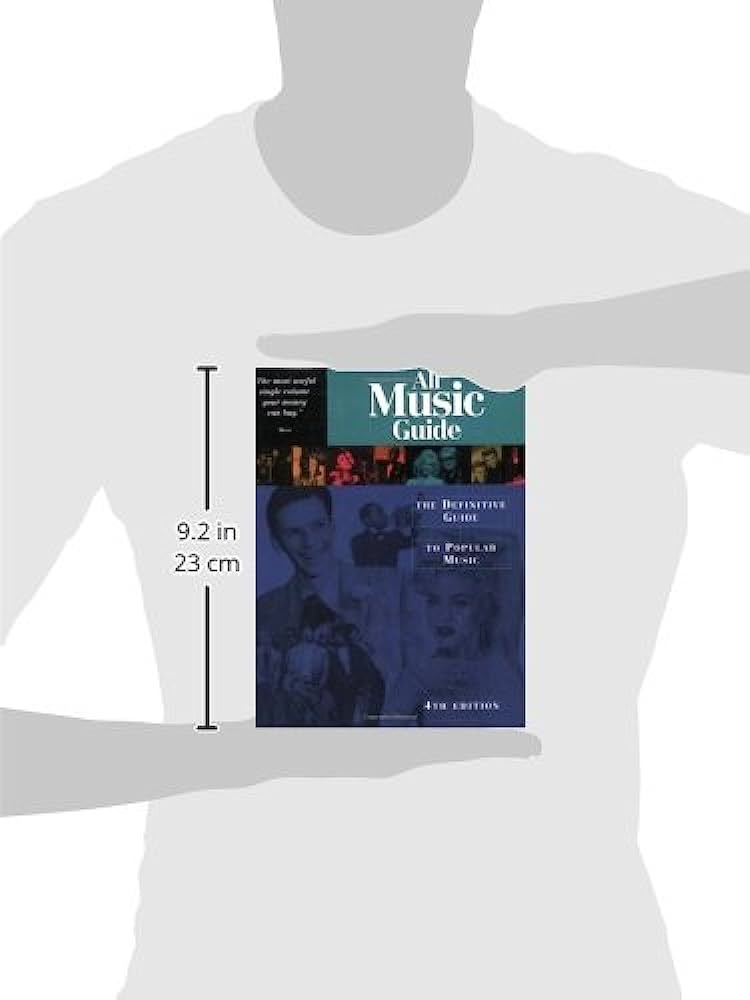Rap is a popular music genre characterized by rhythmic speech and wordplay. It originated in the united states in the 1970s and has since become a global phenomenon.
Known for its distinct beats and expressive lyrics, rap often addresses social and political issues, personal experiences, and storytelling. It has evolved into various subgenres such as trap, gangsta rap, and conscious rap, each with its own unique style and themes.
Artists like tupac shakur, notorious b. i. g, and jay-z have played significant roles in shaping and popularizing rap music. Rap has had a profound cultural impact, transcending boundaries and resonating with listeners from diverse backgrounds. Its influence can be seen in other genres like pop and r&b, as well as in fashion and language. Today, rap remains a vibrant and ever-evolving genre that continues to push boundaries and inspire new generations of artists.

Credit: www.chron.com
Introduction To Rap – The Evolution Of A Global Phenomenon
The Origins Of Rap Music
Rap music, with its rhythmic beats and lyrical flow, has become a global phenomenon in the music industry. This unique genre has evolved over the years, drawing inspiration from various sources. Let’s take a dive into the origins of rap music and understand its roots.
- Hip-hop culture:
- Emerged in the 1970s in african-american and latino communities in new york city.
- Encompasses rap music, djing, breakdancing, and graffiti art.
- Spoken word poetry:
- Influenced by african griots, who were oral historians and storytellers.
- Form of self-expression through rhythmic spoken words.
- Jamaican toasting:
- Early form of rap where djs chanted over reggae beats.
- Toasting evolved into rap with the use of rapping over instrumental tracks.
The Influence Of African And African-American Culture
The origins of rap music can be traced back to the cultural influences of african and african-american communities. This rich heritage has played a pivotal role in shaping rap music as we know it today.
- Call and response tradition:
- Rooted in african music, where a leader calls out and the community responds with a chorus or rhythmic verse.
- Incorporated into rap through the interaction between the rapper and the audience.
- Storytelling and oral tradition:
- African communities have a strong tradition of storytelling through music and oral history.
- Rap music embraces this tradition by conveying meaningful narratives and personal experiences.
- Social and political activism:
- African-american music has long been a platform for addressing social issues and promoting change.
- Rap music continues this legacy by addressing topics such as racism, inequality, and social justice.
Rap music’s evolution into a global phenomenon can be attributed to its ability to connect with diverse audiences through its powerful beats, engaging lyrics, and exploration of pressing social matters. With its roots firmly grounded in african and african-american culture, rap continues to captivate the world with its artistic expression and thought-provoking messages.
Understanding Rap As A Music Genre
Rap music has been a prominent genre in the music industry for decades, captivating audiences with its unique style and rhythmic beats. Understanding rap as a music genre involves delving into its defining characteristics and recognizing the profound role of lyrics and storytelling.
Let’s explore these aspects in greater detail.
Defining The Characteristics Of Rap Music
Rap music is characterized by several key elements that set it apart from other genres. These characteristics include:
- Rhythmic vocal delivery: Rap songs feature a highly rhythmic vocal delivery, often with a fast tempo and intricate wordplay. This aspect of rap music allows artists to showcase their lyrical skills and creative abilities in a captivating manner.
- Beat-centric focus: In rap music, the beat takes center stage. Artists skillfully weave their lyrics around the instrumental backdrop, creating a harmonious fusion of rhythm and poetry.
- Sampling and production techniques: Rap frequently incorporates elements of sampling, where artists use snippets of existing songs and instrumentals to create their own unique compositions. Additionally, producers play a significant role in the genre, utilizing specific production techniques to enhance the overall sound and atmosphere of rap songs.
- Expression of personal experiences and social commentary: Rap often serves as a platform for artists to express their personal experiences, emotions, and social commentary. Through their lyrics, rappers shed light on various societal issues, ranging from poverty and discrimination to political injustice.
- Freestyle and improvisation: Rap music embraces the art of freestyle and improvisation. Artists showcase their lyrical prowess by delivering spontaneous verses, often in a rapid-fire manner, showcasing their ability to think quickly on their feet.
The Role Of Lyrics And Storytelling In Rap
Lyrics and storytelling form the backbone of rap music, enabling artists to convey powerful messages and connect with their listeners on a profound level. Here are some key points to consider:
- Powerful storytelling: Rap is renowned for its ability to tell stories, allowing artists to share their experiences and perspectives in a compelling way. Through vivid imagery and clever wordplay, rappers transport their audience into their world, addressing themes that resonate with their listeners.
- Social and personal commentary: Many rap songs serve as a commentary on social issues, giving voice to the marginalized and shedding light on injustices. Artists often use their lyrics to challenge societal norms, advocate for change, and provoke thought among listeners.
- Emotional depth: Lyrics in rap music are often deeply personal and emotionally charged. Artists share their triumphs, struggles, and vulnerabilities, providing a raw and unfiltered glimpse into their lives. This emotional depth fosters a sense of connection between the artist and the audience.
- Wordplay and metaphor: Rappers are skilled wordsmiths, utilizing wordplay, metaphors, and clever rhymes to captivate their listeners. These linguistic nuances add layers of depth and complexity to their lyrics, making rap an art form that requires careful analysis and appreciation.
Rap music continues to evolve and push boundaries, captivating audiences with its distinctive characteristics, profound storytelling, and dynamic lyricism. By understanding the defining features of rap and recognizing the role of lyrics and storytelling, we can embark on a journey through this influential genre, appreciating its artistry and cultural significance.
Exploring The Subgenres Of Rap
Gangsta Rap: Portraying Life In The Streets
Gangsta rap is a subgenre that emerged in the 1980s, gaining popularity for its raw and gritty portrayal of urban life, specifically life in the streets. Here are key points to understand about gangsta rap:
- Originating from west coast hip hop, gangsta rap provides a window into the harsh realities faced by individuals living in marginalized communities.
- Gangsta rap delves into themes such as violence, crime, drug use, and socio-economic struggles.
- Artists like n.w.a., tupac shakur, and the notorious b.i.g. Helped shape the gangsta rap genre and its popularity in the music industry.
- Gangsta rap can be seen as an artistic medium that sheds light on the social issues faced by minority communities, giving a voice to those who are often overlooked.
- The controversial nature of gangsta rap has led to debates about its influence on society, with critics arguing that it promotes violence and glorifies criminal behavior, while others maintain that it serves as a form of expression and social commentary.
Conscious Rap: Spreading Social And Political Messages
Conscious rap, also known as political or socially conscious rap, is a subgenre that focuses on raising awareness about social and political issues. Here are some key aspects to consider when exploring conscious rap:
- Conscious rap artists aim to use their musical platforms to advocate for social justice, equality, and change.
- This subgenre addresses a wide range of topics, including racism, police brutality, poverty, and the fight for civil rights.
- Artists like common, talib kweli, and kendrick lamar are recognized for their thought-provoking lyrics and socially conscious messages.
- Conscious rap promotes critical thinking and encourages listeners to question societal norms and injustices.
- By intertwining music with activism, conscious rap aims to inspire individuals to take action and create positive change in their communities.
Trap Music: The Rise Of A Powerful Subgenre
Trap music is a subgenre of rap that originated in the southern united states and has experienced significant growth in recent years. Let’s explore the key elements of trap music:
- Trap music is characterized by its heavy use of 808 drum machines, fast hi-hats, and dark, atmospheric melodies.
- The lyrical content often focuses on themes like wealth, street life, drug culture, and the pursuit of success.
- Atlanta played a crucial role in the development and popularization of trap music, with artists like t.i., gucci mane, and future paving the way.
- Trap music’s influence has expanded beyond its origins, infiltrating various other genres and mainstream pop music.
- The catchy beats and energetic vibe of trap music have contributed to its massive popularity, making it a powerhouse subgenre in the music industry.
By exploring the subgenres of rap, such as gangsta rap, conscious rap, and trap music, we gain a deeper understanding of the diverse and multifaceted nature of this genre. Whether it’s providing a voice for marginalized communities, spreading awareness about social issues, or simply serving as a soundtrack for life, rap continues to evolve and captivate audiences worldwide.
The Cultural Impact Of Rap Music
Rap’S Influence On Fashion And Style
—
Rap music, with its powerful lyrics and unique beats, has had a significant impact on various aspects of culture. One such area that has been heavily influenced by rap music is fashion and style. From the clothes worn by iconic rap artists to the trends that have emerged from the genre, rap has forever changed the way we dress and express ourselves.
Rap’S Influence On Fashion And Style:
- The rise of streetwear: Rap music played a pivotal role in the rise of streetwear fashion. Artists like run-dmc popularized the use of adidas sneakers with their iconic track suit outfits, while artists like tupac shakur and notorious b.i.g. Introduced baggy jeans and oversized apparel into the mainstream fashion scene.
- Brand endorsements: Rap artists have seamlessly integrated fashion and style into their brand image. They are known for their collaborations with luxury fashion labels and their ability to influence fans’ purchasing decisions. Examples include jay-z’s collaboration with luxury brand gucci, kanye west’s yeezy line, and pharrell williams’ partnership with chanel.
- Jewelry and bling: Rap music is often associated with flashy jewelry and bling. From gold chains, diamond-studded watches, and grillz to oversized pendants and bracelets, rap stars have shaped the popularity and demand for lavish jewelry in the fashion industry.
- Hairstyles and accessories: Rap music has also influenced hairstyles and accessories. From the iconic high-top fade popularized by kid ‘n play to the braided hairstyles chosen by artists like snoop dogg and kendrick lamar, rap artists have set trends and inspired individuals to experiment with their own unique styles.
Rap’S Role In Shaping Social Movements
—
Rap music has not only influenced fashion and style, but it has also played a significant role in shaping social movements throughout history. Artists have used their platform to shed light on important issues, spark conversations, and advocate for change.
Here are a few key points to note:
Rap’S Role In Shaping Social Movements:
- Speaking out against social injustices: Rap music has been a powerful tool for addressing social injustices, including racism, police brutality, and systemic oppression. Artists like public enemy, n.w.a., and kendrick lamar have used their lyrics to bring attention to these issues, serving as a voice for marginalized communities and promoting social change.
- Empowerment and self-expression: Rap music has provided individuals, especially those from marginalized backgrounds, with a platform to express themselves creatively. It has served as a way for artists to share their personal stories, struggles, and triumphs, empowering listeners to embrace their own identities and speak their truth.
- Promoting unity and community: Rap music has often been a unifying force, bringing people from different backgrounds together. Artists have used their music and influence to promote unity, foster community, and challenge societal divisions. This has been evident through collaborations between artists from diverse backgrounds and the support shown within the rap community.
- Inspiring activism: Rap music has inspired activism and encouraged individuals to take action. It has mobilized communities, sparked conversations, and fueled movements for social justice. Artists like tupac shakur, immortal technique, and killer mike have not only spoken out through their music but have actively participated in protests and community initiatives.
Rap music’s cultural impact extends beyond its catchy beats and thought-provoking lyrics. Its influence on fashion and style as well as its role in shaping social movements has made it a force to be reckoned with. Through fashion trends, social activism, and empowering messages, rap music continues to shape and redefine culture.
The Evolution Of Rap In Mainstream Music
Crossover Success: Rap In Pop And Rock Music
Rap music has undeniably made a significant impact on mainstream music, transcending genre boundaries and infiltrating pop and rock music. The evolution of rap in mainstream music can be observed through its crossover success, as rap artists collaborate with artists from other genres, blending their distinct styles together.
Here are some key points to understand this phenomenon:
- Collaboration: Rap artists have collaborated with pop and rock musicians, creating captivating songs that appeal to a broader audience. Through these collaborations, rap has found a place in pop and rock music, introducing new elements and fresh perspectives to the genres.
- Experimentation: Pop and rock artists have embraced rap by incorporating rap elements into their music. Whether it’s the infusion of rap verses or the use of rap-inspired beats, this experimentation has allowed mainstream music to evolve and adapt to the changing tastes of listeners.
- Breaking barriers: The crossover success of rap in pop and rock music has broken down barriers between genres. It has challenged traditional notions of what constitutes a pop or rock song, fostering diversity and inclusivity within the music industry.
- Commercial success: The collaboration between rap and pop/rock artists has resulted in chart-topping hits and commercial success. These cross-genre collaborations have generated immense popularity, demonstrating the power of combining different musical styles.
- Cultural influence: Rap’s presence in pop and rock music has had a profound cultural impact, bridging the gap between different communities and fostering unity through music. It has helped to bring rap music into the mainstream consciousness, making it more accessible and relatable to a wider audience.
The Globalization Of Rap: International Artists Making Waves
Rap music has not only conquered the mainstream music scene within the united states but has also gone global, with international artists making their mark in the rap industry. Here are some key points to understand the globalization of rap:
- Cultural exchange: Rap’s global appeal has sparked a cultural exchange between different countries and communities. Artists from various regions bring their unique perspectives and experiences to the rap genre, enriching it with diverse sounds and storytelling techniques.
- Language no barrier: Rap has shown that language is no barrier to its global impact. Non-english rap artists have gained recognition worldwide, breaking through language barriers and connecting with audiences on a universal level.
- Local flavors: International rap artists infuse their music with local flavors, incorporating traditional instruments, rhythms, and languages into their rap songs. This blending of local elements with the rap genre adds depth and authenticity, creating a distinct sound that resonates with listeners.
- Internet and social media: The rise of the internet and social media platforms has played a pivotal role in the globalization of rap. Artists can now connect with fans, share their music, and collaborate with fellow musicians from around the world, leading to the rapid spread of rap music across borders.
- Inspiring future generations: The success of international rap artists inspires aspiring musicians from diverse backgrounds, encouraging them to pursue their passion for rap. This global representation within the rap genre provides a platform for underrepresented voices, allowing them to share their stories and experiences with a global audience.
The Business Of Rap Music
With its unique rhythmic flow, powerful lyrics, and ability to share stories, rap music has become a global phenomenon. Not only has it influenced and shaped popular culture, but rap has also greatly impacted the music industry’s business model. In this section, we will explore two key aspects related to the business of rap music: the rise of independent rap labels and rap’s effect on the music industry’s business model.
The Rise Of Independent Rap Labels
In recent years, the rap music scene has witnessed the emergence and success of independent rap labels. These labels have become power players in the industry, challenging the dominance of major record labels. Here are some key points to note:
- Independent rap labels provide a platform for diverse and unique voices in the rap community. They offer artists the freedom to express themselves authentically, without the pressure to conform to mainstream expectations.
- These labels often prioritize artistic integrity over commercial success. They allow rap artists to maintain creative control and ownership of their work, leading to a greater sense of empowerment.
- Independent rap labels leverage digital platforms and social media to market and distribute their music, reaching a global audience. The internet has leveled the playing field, enabling independent artists to gain visibility and connect directly with their fans.
- This rise of independent labels has led to increased competition within the rap genre. Major labels are now more willing to sign rap artists, recognizing the commercial success and influence of the independent rap scene.
Rap’S Effect On The Music Industry’S Business Model
Rap music has disrupted the traditional music industry’s business model in several ways. Let’s take a closer look:
- Rap’s popularity has pushed record labels to adapt their strategies. They now actively seek rap artists to attract a younger demographic and tap into the genre’s massive fan base.
- Streaming services like spotify and apple music have become the primary platforms for music consumption. Rap music, with its dedicated fan base, has been at the forefront of this shift. This has resulted in artists and labels relying heavily on streaming revenue and focusing on creating music that resonates with streaming audiences.
- The success of rap artists has paved the way for lucrative brand partnerships and endorsements. From clothing lines to beverage collaborations, rap artists have become powerful influencers in the marketing world.
- The rise of rap has also influenced concert and touring business models. Rap artists frequently embark on highly successful and profitable tours, capitalizing on their fan base’s eagerness to experience their performances live.
The business of rap music has experienced significant transformations due to the rise of independent rap labels and rap’s impact on the music industry’s business model. Independent labels have disrupted the industry’s traditional power dynamics, while rap’s popularity has forced major labels to adapt and embrace the genre.
As rap continues to evolve, its influence on the business side of music is likely to grow, shaping the industry for years to come.
The Future Of Rap Music
Music Genres: Rap
Rap music has come a long way since its inception in the 1970s. It has evolved, diversified, and continues to dominate the music industry. In this section, we will delve into the future of rap music, focusing on two key aspects: experimental rap: pushing boundaries and challenging norms and the continued influence of rap in popular culture.
Experimental Rap: Pushing Boundaries And Challenging Norms
Experimental rap is a subgenre that pushes the boundaries of traditional rap music by incorporating unconventional sounds, lyrics, and production techniques. Here are some key points:
- Unique sounds: Experimental rap takes rap music to new heights by embracing unorthodox beats and melodies. Artists experiment with a variety of instruments, samples, and electronic effects to create a distinct sound that challenges the norms of the genre.
- Blurred boundaries: This subgenre blurs the lines between genres, incorporating elements of rock, jazz, electronic, and even classical music. This fusion of different styles results in a fresh and innovative sound that appeals to a broader audience.
- Thought-provoking lyrics: Experimental rap often tackles complex subject matters, addressing social issues, personal struggles, and philosophical concepts. The lyrics provoke thought and encourage listeners to question the status quo.
The Continued Influence Of Rap In Popular Culture
Rap music has undeniably shaped popular culture for decades and continues to make a significant impact today. Here are some key points:
- Mainstream success: Rap has transcended its roots and penetrated the mainstream music scene. More and more rap songs are topping the charts, and rappers are becoming household names, crossing over into other forms of media such as film and fashion.
- Spawning new trends: Rap has always been at the forefront of trends, from fashion to slang. Rappers have a unique ability to set trends and influence the masses, often becoming trendsetters themselves.
- Empowering voices: Rap music has provided a platform for marginalized communities to express their experiences and perspectives. It gives a voice to those who may feel unheard and provides a sense of empowerment and representation.
The future of rap music looks promising, with experimental rap pushing boundaries and challenging norms, and rap’s continued influence on popular culture. As rap evolves and diversifies, we can expect to see even more innovation and impact from this influential genre.
So, keep an eye out for the next wave of rap artists who will shape the future of music.
Frequently Asked Questions For Music Genres Rap
What Are The Different Subgenres Of Rap?
Some popular subgenres of rap include trap, conscious rap, gangsta rap, mumble rap, and alternative rap. Each subgenre has its own unique style, lyrical content, and influences.
Who Are Some Famous Rap Artists?
Some famous rap artists include eminem, jay-z, kendrick lamar, drake, and nicki minaj. These artists have made significant contributions to the rap genre and have achieved great success in their careers.
How Did Rap Music Originate?
Rap music originated in the 1970s in the bronx, new york. It emerged as a form of expression for african american and latino communities, combining rhythmic speech, beats, and storytelling to create a new style of music. Over the years, it has evolved and gained worldwide popularity.
Conclusion
In this blog post, we explored the fascinating world of rap music genres. From its humble beginnings in the streets of the bronx to its global influence today, rap has evolved into a diverse and ever-evolving genre. We delved into the origins of rap, its cultural significance, and some of the most influential artists that have shaped its landscape.
Whether it’s the conscious lyrics of kendrick lamar or the catchy hooks of drake, there is something for everyone in the world of rap. Furthermore, we discussed various subgenres that have emerged within rap, including trap, mumble rap, and conscious rap.
Each subgenre brings its own unique style and message to the table, catering to different tastes and preferences. As rap continues to evolve and push the boundaries of music, one thing remains clear – its impact is undeniable. The influence of rap extends far beyond the confines of the music industry, touching various aspects of society and shining a light on important social issues.
Rap music genres offer an expansive and alluring soundscape for music enthusiasts around the world. With its ability to capture and reflect the realities of today’s society, rap continues to be a powerful force in the world of music. So put on your headphones and dive into the rich tapestry of rap music – you won’t be disappointed.













